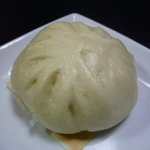
二見の豚まん
Futaminobutaman
3.53
Nanba, Nihonbashi, Dotonbori
「Pork Buns」
--
--
Opening hours: 11:00-22:00 Open Sundays
Rest time: Thursdays (open if the regular holiday is a national holiday) Business hours and holidays are subject to change, so please check with the store before visiting.
大阪府大阪市中央区難波3-1-19
Photos
(20)

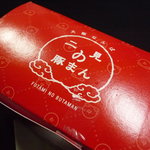
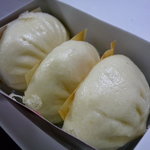
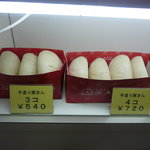
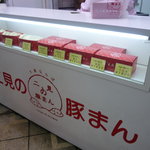
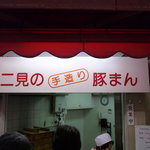
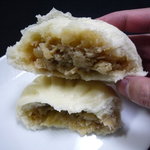

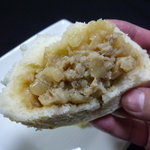
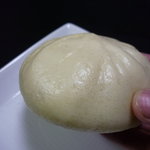

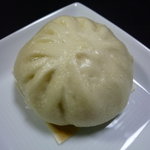
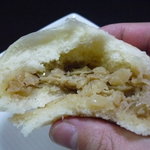
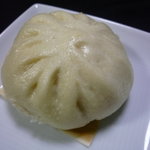
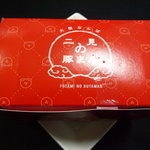
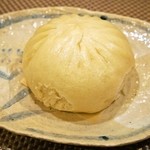
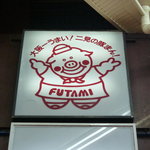
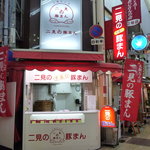
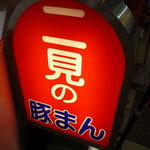
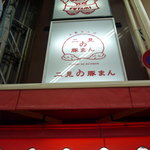
Details
Reservation Info
No Reservations
Children
child-friendly
Payment Method
No credit cards
Electronic money is not accepted
Number of Seats
(Take-out only)
Private Dining Rooms
None
Smoking and Non-Smoking
No smoking at the table
Parking
None
Comments
(20)
はーつーちゃん
4.00
This is the kind of snack that is milder and less fragrant than those from a famous store, making you want to buy one to eat on the spot. It's so tempting that you might even buy a can of beer from the convenience store beforehand and enjoy it on a bench at a place like Edion. But be careful! If there's a security guard around, you'll definitely get scolded because eating and drinking are prohibited here. The skin is deliciously crispy, and the filling is light yet satisfying. It doesn't come with mustard like at that other place, but I get it now! If you added mustard, it would overpower the delicate balance of flavors. I don't know for sure though!
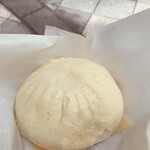
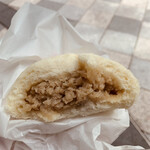
にゅん♪♪
3.50
Around noon, the monthly drinking party with Kita-san started and ended in the early evening. This time, we visited 6 different places before heading to Kita-san's house where he always helps his wife by bringing back something for dinner. Kita-san had made a large batch of mapo tofu for lunch, so we decided to go for a simple meal. I recommended the Nikken pork buns as a light snack option, which is a hidden gem in Namba that some say surpasses the famous 551 Horai. I bought 3 pork buns for 690 yen. I couldn't eat them that day, so I microwaved them the next day (during a typhoon). The pork buns were quite filling and tasted good, similar to the refrigerated 551 pork buns you can find in supermarkets. Overall, they were delicious, but not as flavorful as 551. Kita-san's wife also tried them and had a similar opinion. The flavor was mild and lacked the punch that 551 has. It was a tough crowd to please.
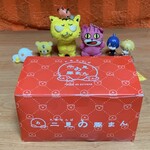
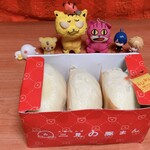
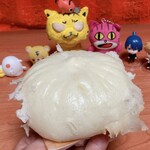
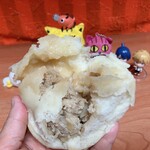
Kyowan
3.50
I visited a restaurant with my family on a holiday afternoon. The place is located on the east side of the entrance to Namba Nankai Street, just to the left as you enter from the south side of Takashimaya Osaka Store (Nankai Namba Station). I am familiar with the pork buns from 551, which is the rightmost one, and I always enjoyed eating them. On the other hand, although I always see Nimai when walking around Namba, I have never actually tried it. Today, my family wanted to do a taste test, so we decided to bring some back home together (we bought from the main store of 551). When we arrived at the store, there was no line. An older lady was sitting there. We purchased 3 pork buns at 230 yen each (there is a box of 3 for 690 yen). She took them out from a large square steamer behind the store and packed them for us. It took about 20 minutes and we brought them home. Mustard was included, but we tried them as is first. Oh, maybe because there was a lot of onions, the taste was elegant and sweet. The spiciness was not strong, and it can be described as simple. On the other hand, 551 was full of meaty flavor, and you can strongly taste the pork. This may be a matter of personal preference, but I didn't think there would be such a big difference in popularity between these two products. It is true that if you eat Nimai after 551, you may feel unsatisfied, but the deliciousness of Nimai is hard to resist. While 551 has a flashy store expansion, Nimai, with only one store, is carrying a big disadvantage, but I want to support them. Thank you for the meal.
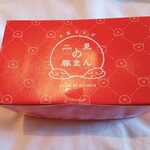
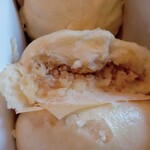

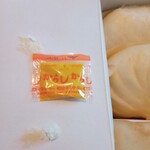
ほわいとあっぷる
3.60
"Namba's pork bun. Cash payment. Can be handed over immediately. The pork bun has a not-too-sweet dough and is filled tightly with ingredients. It has a good weight to it, and the skin is thin. The packed filling has a subtle sweetness of the meat and is delicious. It's great for eating on the go. Thank you for the meal."
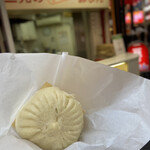
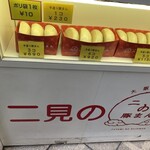
純情★一番
3.50
When it comes to pork buns, there's 551's pork bun and Nimise's pork bun. Both are delicious, it just depends on personal preference. It's fun to compare while trying different ones. 551's pork buns are sold in many places, but Nimise's pork buns are only available here, so if you're in Namba, please be sure to stop by.
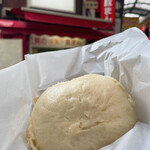
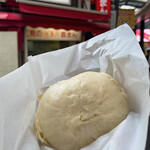
aminya13
3.50
Wandering around and eating~♩♩ We decided to share between two people, and the size was enough. I love the 551 pork buns, which are also in Kyoto, so I eat them occasionally, but this was my first time here. Since we came all the way to Namba, we decided to take on this new challenge. I read in a review that the skin is softer compared to 551, so I was imagining it to be fluffy like a convenience store meat bun. But when I tried it, the firmness of the pork bun reassured me. The chewy texture with a hint of sweetness is great, right? It goes well with the savory flavor of the pork. It's a happy food adventure.
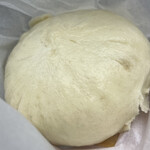
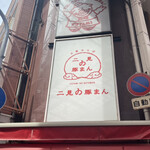
はーつーちゃん
4.00
When you come to Osaka, definitely try 551 Horai, but sometimes try something different like this place! I'm not sure, but be careful buying canned beer at the convenience store and eating it on a bench at EDION, you might get scolded by the security guard. It's true! Haha. Is Futami in Mie? There's a big pork bun there, is it similar to that? Someone please tell me!
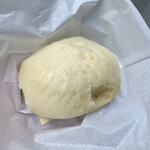
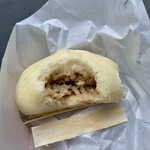
西明石中心
4.20
"Pork bun" (tax included 230 yen) may be a bit pricey, but it's quite large in size. The skin part tastes pretty good when you take a bite. And when you try the filling, it's also delicious. I think it's the best pork bun I've ever had. I ate about half of it plain, and then added the provided hot mustard for the rest. Both ways were tasty, but I think it's better without the mustard. I had heard it was delicious, and it really was worth the visit. I went during Golden Week on a Thursday. It seemed like the Two-See Pork Bun shop was closed on Thursdays. However, there was someone selling pork buns in front of the store. I peeked inside the cover and saw a staff member who was able to assist me. It was around 3 pm, but it seemed like they were just about to open the store. I arrived at a good time. If I had come a bit earlier, I wouldn't have been able to buy any. I'm grateful to the staff member who opened the store for me. If I ever come back to Namba, I would like to stop by and buy some as souvenirs.
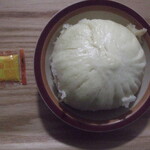
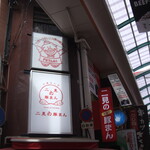
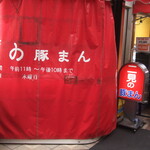
たけぞう007
4.00
Recommended by a gourmet friend, this was my first visit. I have eaten at the nearby 551 many times, and every time I see the long line, I am impressed. However, at Futami-san, there are also times when there is a line, but you can buy smoothly. Since it's only for takeout, I thought I couldn't eat all three, but there was a sign saying you can buy just one. I wanted to try it right away, so I ordered one immediately. The pork bun that came out was big for 230 yen! When I tried it, the harmony of meat and onions was amazing! It's a different kind of deliciousness from 551 ☺️ I highly recommend this place over going to fast food when you're a little hungry. Thank you for the meal. When I go back to my hometown, I will make it a souvenir to boast to the locals.
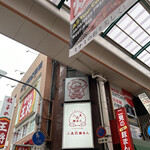

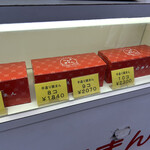
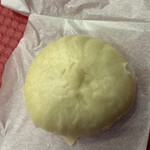
まぁやん(わんぱく倶楽部)
3.50
I went on a trip to Osaka. On the first day, I was disappointed to find out that they were sold out and closed, which made me feel sad. On the second day, I tried one and it was delicious! I think I prefer it over 551. On the last day, I bought some as souvenirs. The fact that it's run by two older ladies gives it a warm and cozy feeling. To those lining up at 551, you should try this place too! It has a different kind of deliciousness. You'll miss out if you don't know about it. Thank you for the delicious meal. I will definitely visit again!
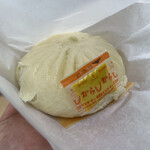
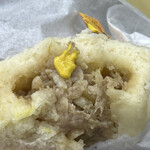
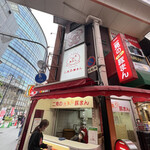
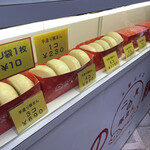
こうらん
3.30
I visited here because you can only buy it here. The store opened at 3:30 PM, so I wandered around for about 30 minutes before visiting again. There was already a line. I bought some to eat right away and some as souvenirs. At first, I thought the filling was a bit bland, but when I had the second one, the sweetness of the onions and the mustard created a perfect flavor.
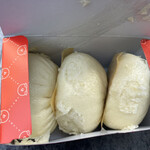
nrk25776
3.50
It's a freshly made and piping hot pork bun. In Kanto, it's called nikuman, but in Kansai, it's called butaman. It's only sold in-store, and an elderly woman handles everything by herself. There were a few customers in line, but I got mine quickly. I had it while it was still hot, and the chewy skin with plenty of filling went well together, and I finished it in no time. It's perfect for eating on the go.
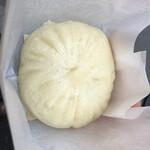
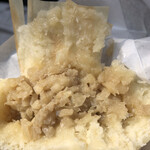
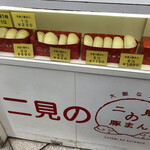
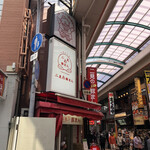
TZO
3.60
Arrived at the restaurant at 13:40 on Friday, despite feeling full, I was driven by a sense of mission to order the "handmade pork bun for 230 yen." The mother kindly wrapped it and handed it to me. It was huge! This is a challenge to me who came here feeling full! The filling had a gentle taste with no unpleasant meatiness, and the sweetness of the onions spread out. It was a kind taste that I could handle. So, I quickly finished it. Thank you for the meal!

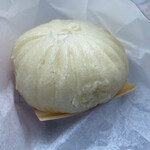
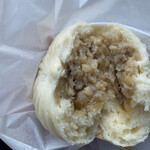
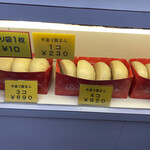
食べ旅 world
3.70
After the Twitter meetup at a ramen shop in Osaka yesterday, I decided to try out a meat bun shop that caught my eye. I bought 3 buns for 690 yen. This morning, when I tried them, the buns were filled with plenty of filling and had crunchy onions inside. They were really delicious! And for only 230 yen each, it's a great deal. Osaka truly is a city for food lovers, with high-quality options that cater to the refined tastes of its residents.
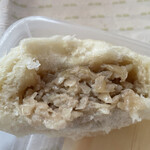
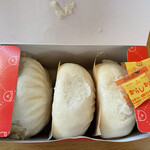
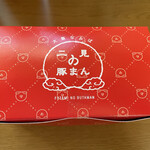
まぁやん(わんぱく倶楽部)
3.50
Pork bun showdown! I prefer the pork bun from Futami over the one from 551 Horai. The Futami bun has a nice texture and sweetness from the onions. The filling in the 551 bun looks like it's mass-produced. It makes sense that they have been around near the 551 main store in Dotonbori for a long time. I wish I had bought more of them!
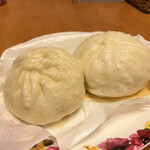
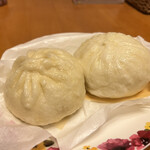
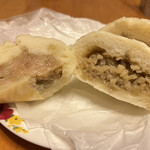
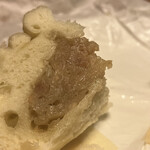
@ぺー助
3.50
There is a 551 nearby, where there are long lines of tourists, but this place is not well known to tourists so there are no lines. Personally, I prefer this place because it has more onions and a stronger juiciness. Eating outside may make it taste even better, but...
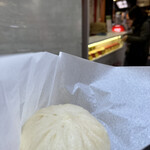
mamekan(^_^)q
4.20
In mid-October 2022, after dinner, I went to "Futami no Butaman" and bought a "Butaman (¥230 tax included)". When I took a bite of the hot Butaman, the taste of the meat filling was exquisite! It's a little better than the Butaman I've had before! Even Mazinger Z would be surprised by this GoGo◯ surpassing taste!
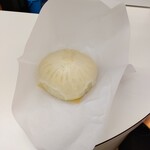
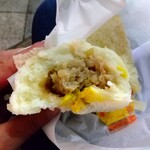
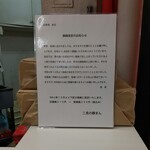
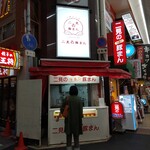
トム
3.70
Welcome.---------- October 2022 ----------While walking through the Namba area shopping street, I happened to come across this place. Hello! I heard that people prefer this place over 551. I usually went to 551, but I finally found this "butaman." It's similar to 551 in terms of its reliable size. When you steam and bake it, it goes "pakkan." The richness of the ground meat and the sweetness of the sautéed minced onions blend well with the slightly chewy dough. If you keep eating it, you'll realize that adding sauce and mustard is a must haha. I could tell that it's located here because it's loved by locals on JIMOTI.
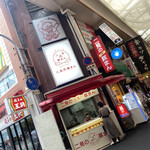
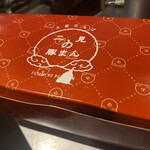
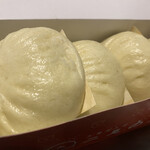
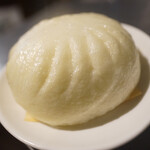
ヤマダタチウオ
4.00
Today I would like to introduce a pork bun shop in Namba! In Osaka, there is a famous pork bun shop called 551, but there is another shop that was established in 1946 in Namba (*‘∀‘). I immediately rode my bike to confirm the rumors! When I arrived at the shop, the mother was running the shop alone and said, "Can you wait for another 10 minutes until they are ready?" Of course, I will wait if I can eat it hot (*‘∀‘). Surprisingly, the pork bun costs only 210 yen. Even though the economy is not doing well, they haven't changed the price much. Osaka people are amazing! [Impression of the pork bun taste] Compared to 551, the umami punch was milder. But thanks to that, the large pork bun slides smoothly into the stomach. Before I knew it, I had easily finished two buns! ('ω') Delicious! The size here is bigger than 551! ( ´∀`)ノ✨ ~Summary~ For young people who want "THE meat bun!!! Yummy (*‘∀‘)," I recommend 551. For those in their late 20s, I recommend trying "I unknowingly ate them all!" The size is bigger than a fist! It's located a 1-minute walk from Takashimaya, so please stop by while shopping. See you again! ✋ (Also suitable for a foodie date) Cost: 210 yen.
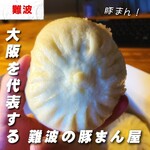
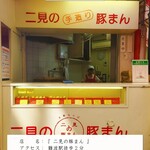
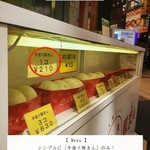
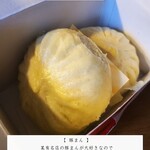
gozeera
3.90
It's not nikuman, it's butaman. The difference in name is explained at the end of the text. This is a rare shop in Namba, with only one store. It is located near Grand Kagetsu. Established in 1946, the same year as 551 started selling butaman. While it is a popular shop that rivals 551, it sticks to having only one store. It may not have the nationwide recognition of 551, so it is sometimes called the connoisseur's butaman (many people in Osaka may not even know about it). Butaman costs 210 yen. The dough is fluffy and soft, unlike the chewy texture of 551. The filling consists of pork and, of course, onions! The crunchy onions add sweetness to the filling, becoming the main flavor. The taste is gentle and light, with hints of green onions and ginger. If you're tired of 551 or prefer a light flavor, you should try Nimi. On the other hand, if you prefer a chewy texture, rich pork flavor, intense seasoning, and a strong smell (especially after drinking on the Shinkansen), then 551 is for you. In any case, since they are close by, why not try both and compare them! I bought both and ate them outside (I was so embarrassed). Thank you for the meal! (≧д≦)ゝ!
[551]
Size: Large (smaller than Nimi)
Dough: Chewy and firm
Filling: Plenty of pork, large cuts of pork, strong pork flavor, intense seasoning
Overall rating: 3.8
[Nimi]
Size: Huge (larger than 551)
Dough: Fluffy and soft
Filling: Plenty of onions, large and crunchy, strong sweetness of onions, light flavor compared to 551
Overall rating: 3.9
[Difference between nikuman and butaman]
In the Kansai region, meat is associated with beef culture (Matsusaka beef, Kobe beef, Tajima beef, Omi beef, beef tendons in oden, beef in nikujaga, beef cutlets, etc.), so when people hear "meat," they think of beef. That's why it's called butaman. Not only in Osaka, but also in Kobe, places like Roshoki, Ikkannyu, and Shikoro are also known for butaman. There is also a cultural aspect to this. Historically, the Kansai region was known for cattle farming, leading to the prosperity of beef culture. Additionally, Kobe had a foreign settlement, so Western meat-eating culture was introduced early on. Furthermore, the branding power of 551 plays a role. They heavily advertised their "butaman" on TV commercials. However, in the 1990s when convenience stores expanded nationwide, brands like Nakamuraya and Imuraya also sold nikuman, so even people in Kansai sometimes say "nikuman"! When thinking about this, I wondered whether Chinatown in Kobe sells butaman, and found out that the famous Chinese buns in Nagasaki, Momotaro, are also butaman, as well as Edo Kiyoshi in Yokohama. In regions with Chinatowns, there is a culture of eating various meats like lamb and frog in China, so they may use the term butaman to distinguish it.
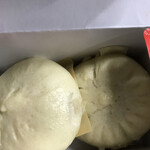
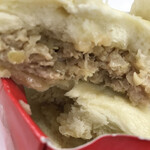
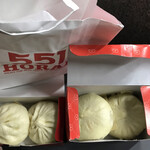
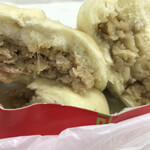
Email Login